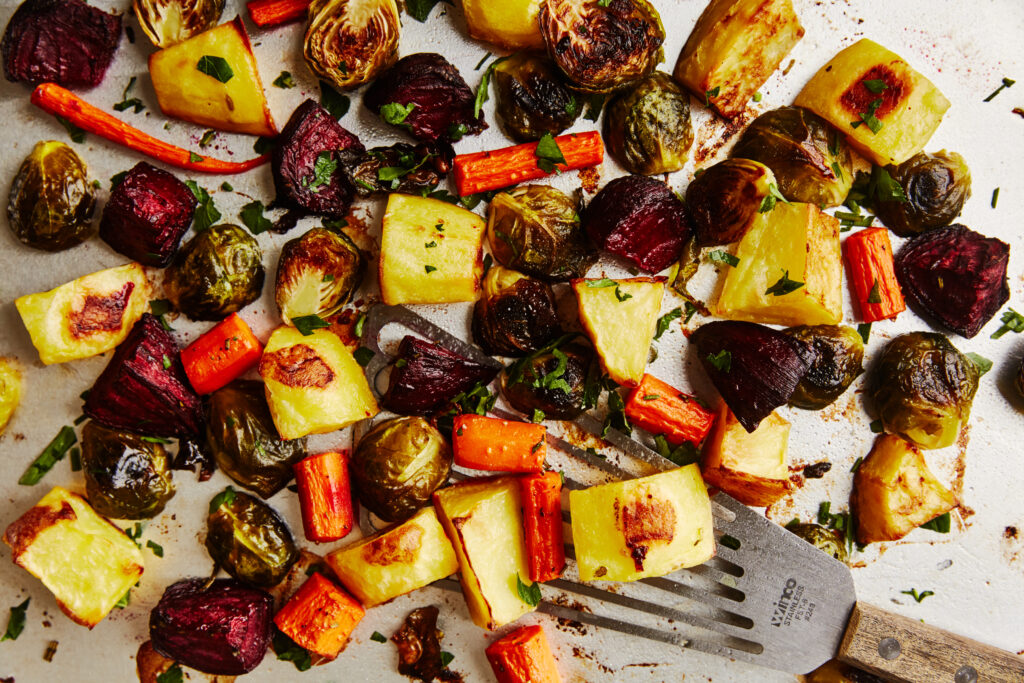The Ultimate Guide to Making the Best Roasted Vegetables

Introduction
Welcome to our ultimate guide on how to make the best roasted vegetables! Roasted vegetables are a delicious and healthy side dish that can complement any meal. Whether you're a seasoned chef or a beginner in the kitchen, this guide will provide you with all the information you need to create perfectly roasted vegetables every time.
Choosing the Right Vegetables
Before we dive into the roasting process, it's important to choose the right vegetables. Opt for fresh, seasonal vegetables for the best flavor and texture. Some popular options include carrots, broccoli, cauliflower, bell peppers, zucchini, and potatoes. Feel free to mix and match your favorite vegetables to create a colorful and diverse roasted vegetable medley.
Preparing the Vegetables
Once you've chosen your vegetables, it's time to prepare them for roasting. Start by washing and drying them thoroughly. Then, chop them into bite-sized pieces to ensure even cooking. If you're using vegetables with different cooking times, consider cutting them into smaller or larger pieces accordingly.
The Roasting Process
Preheat your oven to 425°F (220°C) and line a baking sheet with parchment paper. Spread the prepared vegetables evenly on the sheet, making sure not to overcrowd them. This allows the heat to circulate and ensures even browning. Roast the vegetables for 25-30 minutes, or until they are tender and golden brown. Remember to toss them halfway through cooking to ensure even browning.
Flavoring and Seasoning
While roasted vegetables are delicious on their own, adding flavor and seasoning can take them to the next level. Drizzle some olive oil or vegetable oil over the vegetables to add moisture and enhance the flavors. You can also experiment with different seasonings like garlic powder, dried herbs, or a sprinkle of parmesan cheese. Get creative with your flavors and find the combinations that you love.
Serving and Pairing
Roasted vegetables can be served as a standalone side dish or incorporated into various recipes. They pair well with grilled meats, roasted chicken, or even as a topping for salads. You can also use them as a filling for wraps or sandwiches. The possibilities are endless, so let your culinary creativity shine.
Troubleshooting and Tips
If you're experiencing any issues with your roasted vegetables, here are some troubleshooting tips:
- Ensure that your vegetables are evenly chopped for even cooking.
- Don't overcrowd the baking sheet to allow proper browning.
- Adjust the cooking time depending on the size and type of vegetables.
- Experiment with different seasonings and flavors to find your favorite combinations.
Conclusion
Roasted vegetables are a versatile and delicious addition to any meal. With the right vegetables, proper preparation, and a little creativity, you can create the best roasted vegetables every time. So, go ahead and experiment with different flavors, seasonings, and pairings to discover your perfect roasted vegetable recipe.
F.A.Q.S.
1. Can I use frozen vegetables for roasting?
Yes, you can use frozen vegetables for roasting. However, keep in mind that frozen vegetables may have a higher water content, which can affect the texture and browning. It's recommended to thaw and pat dry the frozen vegetables before roasting for better results.
2. How long does it take to roast vegetables?
The roasting time can vary depending on the size and type of vegetables. On average, it takes about 25-30 minutes at 425°F (220°C) for most vegetables to become tender and golden brown. However, you can adjust the cooking time as needed to achieve your desired level of doneness.
3. Can I use olive oil instead of vegetable oil?
Absolutely! Olive oil is a great alternative to vegetable oil for roasting vegetables. It adds a rich flavor and enhances the overall taste of the vegetables. Just keep in mind that olive oil has a lower smoke point, so be careful not to exceed the recommended roasting temperature to avoid burning the oil.
4. What are some popular seasoning options for roasted vegetables?
There are endless seasoning options for roasted vegetables. Some popular choices include garlic powder, dried herbs like rosemary or thyme, paprika, cumin, or a sprinkle of parmesan cheese. Feel free to experiment with different seasonings and find the flavors that suit your taste preferences.